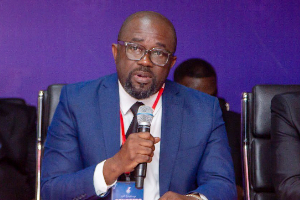Rising liquidity in the Ghanaian economy coupled with increasing growth in bank credit to the private sector are fueling an increase in economic activity which is expected to ultimately translate into faster economic growth.
The first two months of 2019 have recorded the highest annualized growth in total liquidity (measured as M2+) since September 2018.
The year started with 19.5 percent and 22.4 percent growth in total liquidity, year on year , in January and February respectively, compared with 12.2 percent recorded in February 2018 although this increase in total liquidity growth was partly the result of base drift effects arising from the banking sector clean up exercise.
According to the Bank of Ghana’s summary of macroeconomic and financial data for March 2019 the increased pace of growth in total liquidity mainly resulted from expansion in Net Domestic Assets, which recorded 46.7 percent annual growth in February 2019 which is more than five times the 9.0 percent recorded for February 2018. However this growth was moderated by sharp contraction in Net Foreign Assets.
Nevertheless, economists see both trends as positive since it implies that ongoing liquidity growth is becoming available mainly to domestic economic operators – with enterprises becoming better positioned to expand output and households getting more liquidity with which to effectively demand the increased output of those enterprises.
Importantly, increased liquidity is being funneled into credit driven increased production and consumption as private sector credit growth has gained some momentum – this stemming from improved liquidity position of the banks on the back of the recapitalization exercise and the resumption of growth in bank deposits, now that the confidence of the banking public in them has returned.
Annual growth in private sector credit, measured in nominal terms, was 21.1 percent over the 12 month period up to February 2019, compared with 2.4 percent growth over the previous 12 month period.
In real terms, adjusted for inflation, private sector credit expanded by 10.9 percent over the one year up to February 2019 compared with a contraction of 7.4 percent over the 12 months up to February 2018.
The outstanding credit to the private sector at the end of December 2018 was GH¢37,593.2 million, compared with GH¢33,987.0 million as at the end of 2017 2017 and this has been rising at a faster rate since the beginning of this year, with new credit growth being fueled by banks new equity capital rise in deposits and falling non-performing loans levels, to a little over 18 percent currently, down from a peak of 23 percent during the first half of 2018. In real terms, private sector credit expanded by just 1.1 percent in 2018 and this reflects the intensity of the ongoing acceleration in new net lending since the beginning of this year.
Annual growth in Reserve Money however slowed to 9.3 percent in February 2019 compared with 22.7 percent annual growth in the same period of last year.
Government is targeting economic growth of 7.6 percent this year after it slowed to 5.6 percent in 2018, down from over 8 percent in 2017, the first year of the incumbent administration.
Business News of Friday, 12 April 2019
Source: goldstreetbusiness.com













